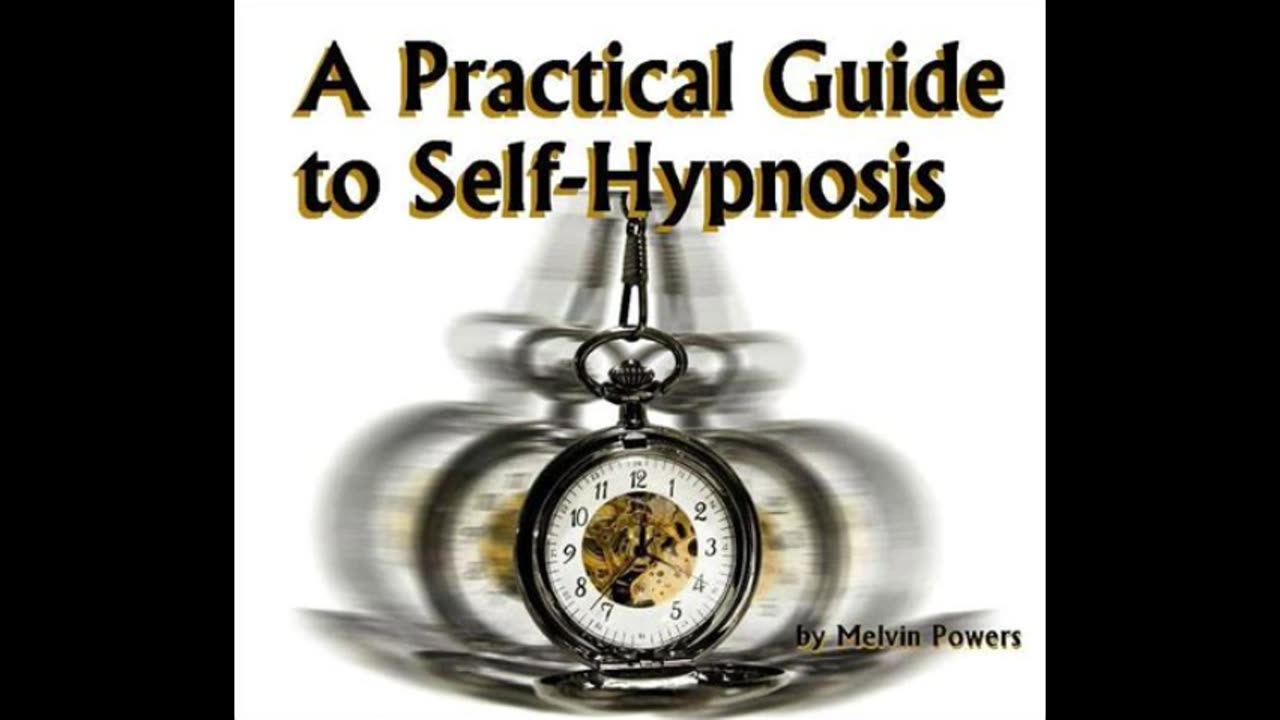Premium Only Content

A Practical Guide to Self-Hypnosis by: Melvin Powers
"A Practical Guide to Self-Hypnosis" by Melvin Powers is a comprehensive manual on how individuals can use self-hypnosis to achieve personal growth, overcome challenges, and enhance their mental and physical well-being. Published in 1950, this book has become a classic in the field of self-help and hypnosis, offering both theoretical insights and practical exercises to teach readers how to harness the power of the subconscious mind through self-hypnosis.
Overview of the Book:
1. Introduction to Hypnosis:
Powers begins by explaining the fundamental principles of hypnosis, dispelling common myths and misunderstandings about the process. He emphasizes that hypnosis is a natural state of focused concentration and relaxation, which can be safely practiced by anyone.
2. Understanding Self-Hypnosis:
Powers defines self-hypnosis as the process by which an individual induces a hypnotic state without the aid of a hypnotist. He highlights the benefits of self-hypnosis, which include increased self-awareness, stress reduction, improved health, and the ability to overcome personal obstacles like bad habits or negative thought patterns.
3. How to Practice Self-Hypnosis:
The core of the book provides step-by-step instructions on how to enter a hypnotic state. Powers introduces techniques for relaxation, breathing, and concentration, guiding the reader through the induction process. He describes various methods, such as fixed-gaze induction and progressive relaxation, that can help individuals enter a deeply relaxed and suggestible state.
4. Using Hypnotic Suggestions:
Once in the hypnotic state, Powers explains how to apply positive suggestions or affirmations to the subconscious mind. These suggestions are a key aspect of self-hypnosis, allowing individuals to reinforce desired behaviors or mindsets, such as quitting smoking, building confidence, or reducing anxiety.
5. Applications of Self-Hypnosis:
Powers outlines practical uses for self-hypnosis, focusing on habit control (like smoking cessation or weight loss), stress management, memory enhancement, and overcoming fears or phobias. The book highlights how individuals can use hypnosis to reprogram the subconscious for positive change and self-improvement.
6. Common Challenges and Solutions:
Powers addresses potential challenges readers may face, such as difficulty entering a hypnotic state or maintaining concentration, offering practical advice to overcome these hurdles.
Key Features of the Book:
- Easy-to-follow techniques: Powers provides clear, concise instructions, making it accessible even for beginners with no prior knowledge of hypnosis.
- Practical focus: The book emphasizes practical applications, encouraging readers to integrate self-hypnosis into their daily lives.
- Positive suggestions: The book emphasizes the importance of positive thinking and constructive suggestions in achieving personal growth.
Impact and Legacy:
- "A Practical Guide to Self-Hypnosis" has become a go-to resource for individuals interested in self-improvement through hypnosis. Its accessible writing and practical approach have made it a popular choice for both beginners and those familiar with the concept of hypnosis.
- Melvin Powers' work has influenced many in the self-help and hypnosis communities, serving as a foundational text for understanding and practicing self-hypnosis.
In conclusion, Melvin Powers offers a practical and empowering guide to harnessing the power of the mind through self-hypnosis. By following the steps outlined in this book, readers can tap into the potential of the subconscious mind to improve various aspects of their lives.
About the Author:
Melvin Powers was an American author, publisher, and entrepreneur best known for his work in the field of self-hypnosis and self-help. Born in 1924, Powers developed an early interest in the power of the mind, which led him to write some of the most accessible and practical books on hypnosis in the mid-20th century. His most popular book, "A Practical Guide to Self-Hypnosis", has become a cornerstone for those interested in using hypnosis as a tool for personal development.
In this book, Powers simplifies the often-misunderstood concept of self-hypnosis, providing clear steps and practical techniques to help readers harness their subconscious mind to overcome bad habits, reduce stress, and improve overall mental well-being. His approach made hypnosis more approachable for the general public, taking it out of the realm of mystery and into everyday practice.
Apart from his writing, Melvin Powers founded the Wilshire Book Company, a successful publishing house that specialized in self-help, metaphysical, and esoteric literature. Through his publishing efforts, Powers ensured that a wide range of readers could access books on topics like hypnosis, psychology, health, and personal growth. His work as both an author and a publisher helped shape the self-help movement of the 1950s and 1960s, making resources for personal empowerment more accessible.
Powers’ influence extended beyond his books, as he actively promoted positive thinking, self-reliance, and the belief that individuals could shape their own futures by using their mental faculties. His writings, including works like "Advanced Techniques of Hypnosis" and "Self-Hypnosis for Success", further explored ways to influence the subconscious mind and achieve personal goals.
Through his efforts in writing and publishing, Melvin Powers left a lasting legacy in the self-help genre. His work in making self-hypnosis practical and easy to understand continues to be appreciated by those seeking self-improvement techniques that empower them to take control of their lives.
-
 47:13
47:13
Deus Meum Que Jus
23 days agoWilliam Cooper - Michael Schiffman, World Parliament of Religion - 9.8.93
465 -
 5:43:44
5:43:44
Scammer Payback
2 days agoCalling Scammers Live
111K17 -
 18:38
18:38
VSiNLive
1 day agoProfessional Gambler Steve Fezzik LOVES this UNDERVALUED Point Spread!
84.7K10 -
 LIVE
LIVE
Right Side Broadcasting Network
10 days agoLIVE REPLAY: President Donald J. Trump Keynotes TPUSA’s AmFest 2024 Conference - 12/22/24
7,023 watching -
 4:31
4:31
CoachTY
19 hours ago $16.87 earnedCOINBASE AND DESCI !!!!
81K8 -
 10:02
10:02
MichaelBisping
18 hours agoBISPING: "Was FURY ROBBED?!" | Oleksandr Usyk vs Tyson Fury 2 INSTANT REACTION
37.2K8 -
 8:08
8:08
Guns & Gadgets 2nd Amendment News
2 days ago16 States Join Forces To Sue Firearm Manufacturers Out of Business - 1st Target = GLOCK
78.2K65 -
 10:17
10:17
Dermatologist Dr. Dustin Portela
2 days ago $17.02 earnedOlay Cleansing Melts: Dermatologist's Honest Review
122K6 -
 1:02:20
1:02:20
Trumpet Daily
2 days ago $38.34 earnedObama’s Fake World Comes Crashing Down - Trumpet Daily | Dec. 20, 2024
80.3K54 -
 6:29
6:29
BIG NEM
1 day agoCultivating God Mode: Ancient Taoist NoFap Practices
59.8K9